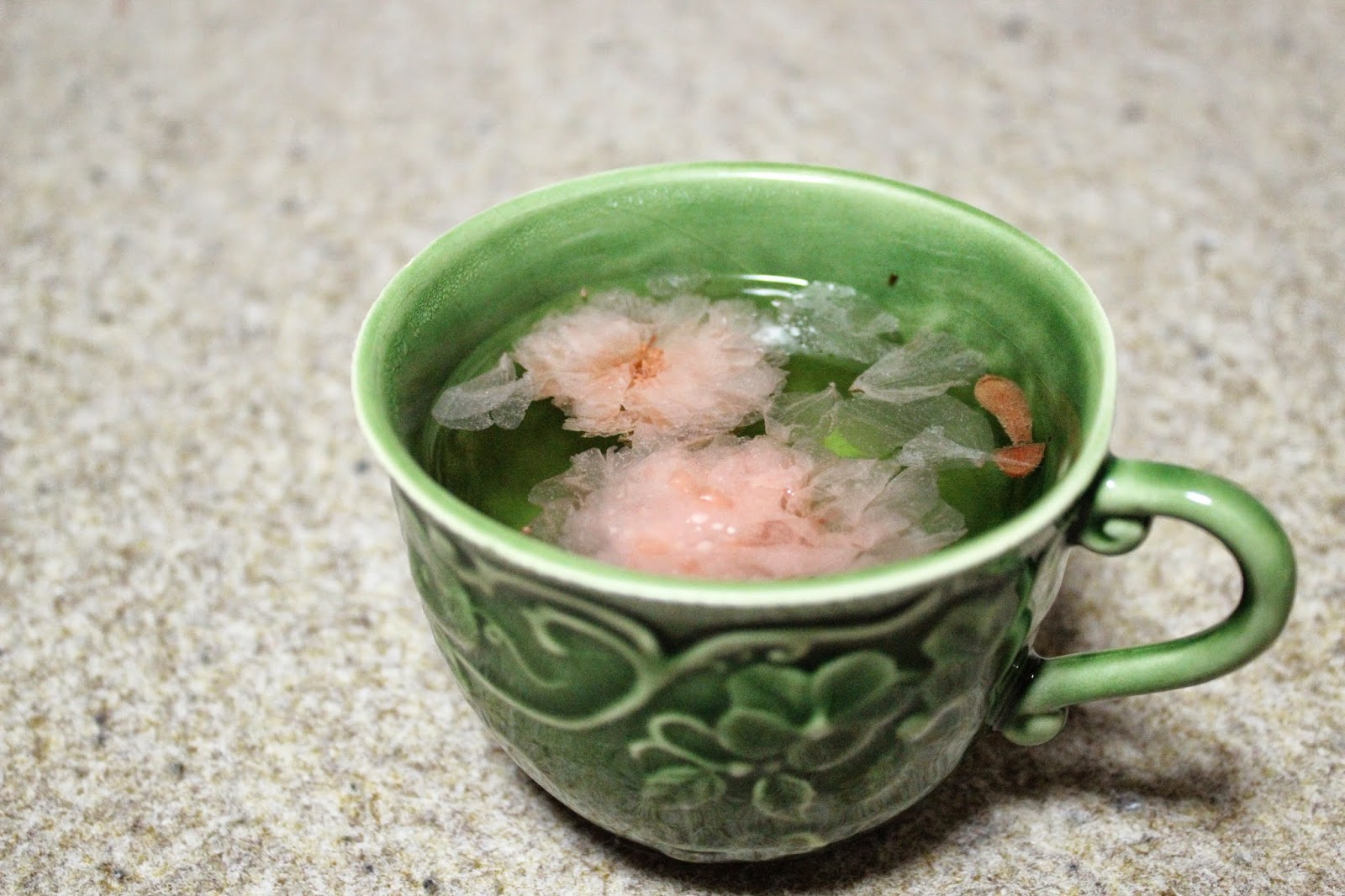ABOUT TEA II
Vor einiger Zeit hatte ich ja schon ein mal ein paar japanische Tees vorgestellt, die ich bis dato kennengelernt hatte. Wie das (Gott sei Dank!) eben so ist, lernt man ja nie aus. Ergo, kann ich euch heute zwei neue Tees vorstellen, die ich probieren durfte.
Vor einiger Zeit hatte ich ja schon ein mal ein paar japanische Tees vorgestellt, die ich bis dato kennengelernt hatte. Wie das (Gott sei Dank!) eben so ist, lernt man ja nie aus. Ergo, kann ich euch heute zwei neue Tees vorstellen, die ich probieren durfte.
[A while ago I told you guys about some Japanese tea I got to know until this day. Fortunately you aalways live and learn. Ergo I can tell you about new kinds of tea again. Of course I tried every tea I tell you about by myself.]
Heute stelle ich euch zwei Sorten vor:
Sobacha & Sakurayu
Sobacha & Sakurayu
[Today I wanna tell you about two kinds of tea:
Sobacha & Sakurayu]
Sobacha & Sakurayu]
SOBACHA
Soba bedeutet "Buchweizen". Es handelt sich also
(wie bei "Mugicha") um einen Getreidetee; diesmal aus Buchweizen.
Es gibt aber auch Soba-Nudeln - bloß nicht verwechseln und das Nudelwasser trinken! Das dürfte nicht besonders gut schmecken.
Es gibt aber auch Soba-Nudeln - bloß nicht verwechseln und das Nudelwasser trinken! Das dürfte nicht besonders gut schmecken.
[Soba means
"buckwheat". So it's (like "mugicha") a grain tea; this time made of
buckwheat.
There are also soba noodles - don't confuse this two. I thing the noodle water isn't tasty!]
There are also soba noodles - don't confuse this two. I thing the noodle water isn't tasty!]
Es gibt zwei Methoden zur
Herstellung:
1.) Die Buchweizenkörner werden geröstet.
2.) Sie werden zuerst gedämpft und dann geröstet.
Bei der lezteren soll der Geschmack intensiver sein.
1.) Die Buchweizenkörner werden geröstet.
2.) Sie werden zuerst gedämpft und dann geröstet.
Bei der lezteren soll der Geschmack intensiver sein.
[There are two different methods for the
production:
1.) The buckwheat is roasted.
2.) First it's steemed and then roasted.
It's said that the taste is more intensive if the buckwheat is preared with the second method.]
1.) The buckwheat is roasted.
2.) First it's steemed and then roasted.
It's said that the taste is more intensive if the buckwheat is preared with the second method.]
Ich mag den nussigen Geschmack dieses Tees und er ist frei von Koffein. Super für den Abend geeignet.
[I like the nutty flavour of it and it's without caffeine. It's perfect for the evening.]


SAKURAYU
...oder auch Kirschblütentee besteht aus
eingelegten Kirschblüten.
Die Hauptzutat sind also die Blütenblätter, die Mitte bis Ende des Frühlings geerntet werden. Der Blütenkelch wird entfernt und die Blüten werden in Pflaumenessig eingelegt. Danach werden sie gesalzen. So kann man das Ganze dann z.B. im Supermarkt oder Teegeschäften kaufen.
Die Hauptzutat sind also die Blütenblätter, die Mitte bis Ende des Frühlings geerntet werden. Der Blütenkelch wird entfernt und die Blüten werden in Pflaumenessig eingelegt. Danach werden sie gesalzen. So kann man das Ganze dann z.B. im Supermarkt oder Teegeschäften kaufen.
[...or cherry blossom tea is made of pickled cherry blossoms. The main ingredient are of course the cherry blossoms petals, which are harvested from mid to late spring. The calyxes are removed and the petals are pickled in plum vinegar. After that they are salted. You can buy this in the supermarket or special tea stores.]
Um den Tee zu bereiten, muss man nur ein
paar Blüten in eine Tasse geben und heißes Wasser darüber gießen. Im
Wasser gehen die Blüten wieder auf, was sehr schön aussieht.
[To prepare this tea you just have to put some of this blossoms into a cup and pour hot water on it.
Once covered in hot water, the collapsed petals unfurl and float.]
Dieser Tee wird (wenn ich es richtig verstanden habe) an Hochzeiten serviert.
["Sakurayu" is served on weddings (if I understand it the right way).]
["Sakurayu" is served on weddings (if I understand it the right way).]
Um
ehrlich zu sein...Ich mag den Tee überhaupt nicht!! Er schmeckt nur
salzig, sauer und eklig. Eben ein echter Fehlkauf. Ich werde diesen Tee
auf jeden Fall nie wieder kaufen.
Honestly..I really don't like the taste of this tea!! It's salty and sour and really disgusting. It wasn't a good decision to buy this tea and I won't do it again.]
Keine Kommentare:
Kommentar veröffentlichen